|
|
Кацусика Хокусай. Тридцать шесть видов Фудзи: № 4. Храм Хонгадзи в районе Асакуса в Эдо
Katsushika Hokusai. Honganji at Asakusa in Edo, from the series Thirty-six Views of Mount Fuji
冨嶽三十六景 東都浅草本願寺Honganji at Asakusa in Edo (Tōto Asakusa Honganji), from the series Thirty-six Views of Mount Fuji (Fugaku sanjūrokkei)Artist: Katsushika Hokusai (1760–1849)Period: Edo period (1615–1868)Date: ca. 1830–32
Honganji Temple at Asakusa in Edo. In the foreground is the gable of the temple with workmen repairing the tiles of the roof. Below are the roofs of Edo with the scaffolding of a fire station rising above them. A kite is flying high in the air, and over floating mist appears the cone of Fuji. (metmuseum)
Asakusa was the most populous district in Edo in Hokusai’s time. Its streets were crowded with stores where busy merchants and craftsmen lived and vigorously plied their trades. One of the district’s landmarks was the enormous Asakusa Honganji Temple, built in 1657, which belonged to a branch of Kyoto Higashi Honganji, the headquarters of Buddhism’s Eastern School of the Pure Land (Jödo) sect. Begun in the Late Heian period (late eleventh century), the Pure Land sect quickly gained a large following. It had one simple, compassionate teaching – that enlightenment (salvation) could be attained not through the study of sutras or observation of complicated rituals, as required in other sects, but simply by sincerely calling Amida’s name. In the Edo period, this teaching spread, and Pure Land became the largest Buddhist sect, with large temples all over Japan. In this composition, Hokusai brought the temple building so close to the foreground that only the triangle of the roof’s pediment is visible. Looking down, one can observe the sea of roofs of smaller houses, over which decorative clouds float. Mount Fuji, above them, repeats the roof’s shape. Hokusai’s dramatic compositional scheme enlarges the temple roof to an enormous proportion, dwarfing houses and the mountain. On the temple’s steep roof, workmen are busy making repairs. Their exaggerated, precise postures are drawn from studies Hokusai made of form and movement, which culminated in the publication of his sketchbooks, the Manga. The towering structure at the left is a scaffold rising over a well excavation. A kite indicates that the season is winter, most likely New Year’s day. The windy days of winter are best for flying kites, the symbol of the new year. Pale pink in the cloud and the kite enlivens a monochromatic blue print. The key-block was printed in blue. (The Asian Art Museum of San Francisco, HOKUSAI AND HIROSHIGE – Great Japanese Prints from the James A. Michener Collection, Honolulu Academy of Arts: The Asian Art Museum of San Francisco, 1998 Page 65. Cat. 16)
Храм Хонгадзи в районе Асакуса в Эдо
Во всей серии гравюр «36 видов Фудзи» в центре внимания художника находится проблема масштабного сопоставления образа природы и человека, переднего и дальнего планов. В гравюре «Храм Хонгандзи в Асакуса» подобное сопоставление масштабов является основой композиционного построения.
Контраст между массивной резной верхней частью крыши храма на переднем плане справа и крышами домиков, утопающих в стилизованно изображенных облаках, далеко внизу, а также виднеющейся на горизонте Фудзи, — является важным композиционным моментом.
Прием изображения плотных облаков, закрывающих часть пространства, был известен в школе Ямато — Тоса. Он применялся, когда художник хотел показать часть пространства в дымке, в тумане. Взгляд скользит по розоватой пелене облаков, от кровли храма к вторящему ей треугольнику горы.
Центр композиции пересечен по диагонали линией веревки, удерживающей воздушного змея, этот прием позволяет ощутить глубину и бесконечную даль открывающегося взору пространства.
Сочетание темно-синего, зеленоватого, розоватого и белого усиливает чувство простора. Такой прием гиперболического увеличения предметов переднего плана подчеркивает глубину пространства гравюры. После Хокусая Хиросигэ также активно использовал подобный художественный прием в серии гравюр «100 видов Эдо».
Katsushika Hokusai. Honganji at Asakusa in Edo, from the series Thirty-six Views of Mount Fuji
Все 46 гравюр серии «Тридцать шесть видов Фудзи» | Thirty-six Views of Mount Fuji | 富嶽三十六景 | Fugaku Sanjūrokkei
12 декабря 2021, 19:34
0 комментариев
|
Партнёры
|

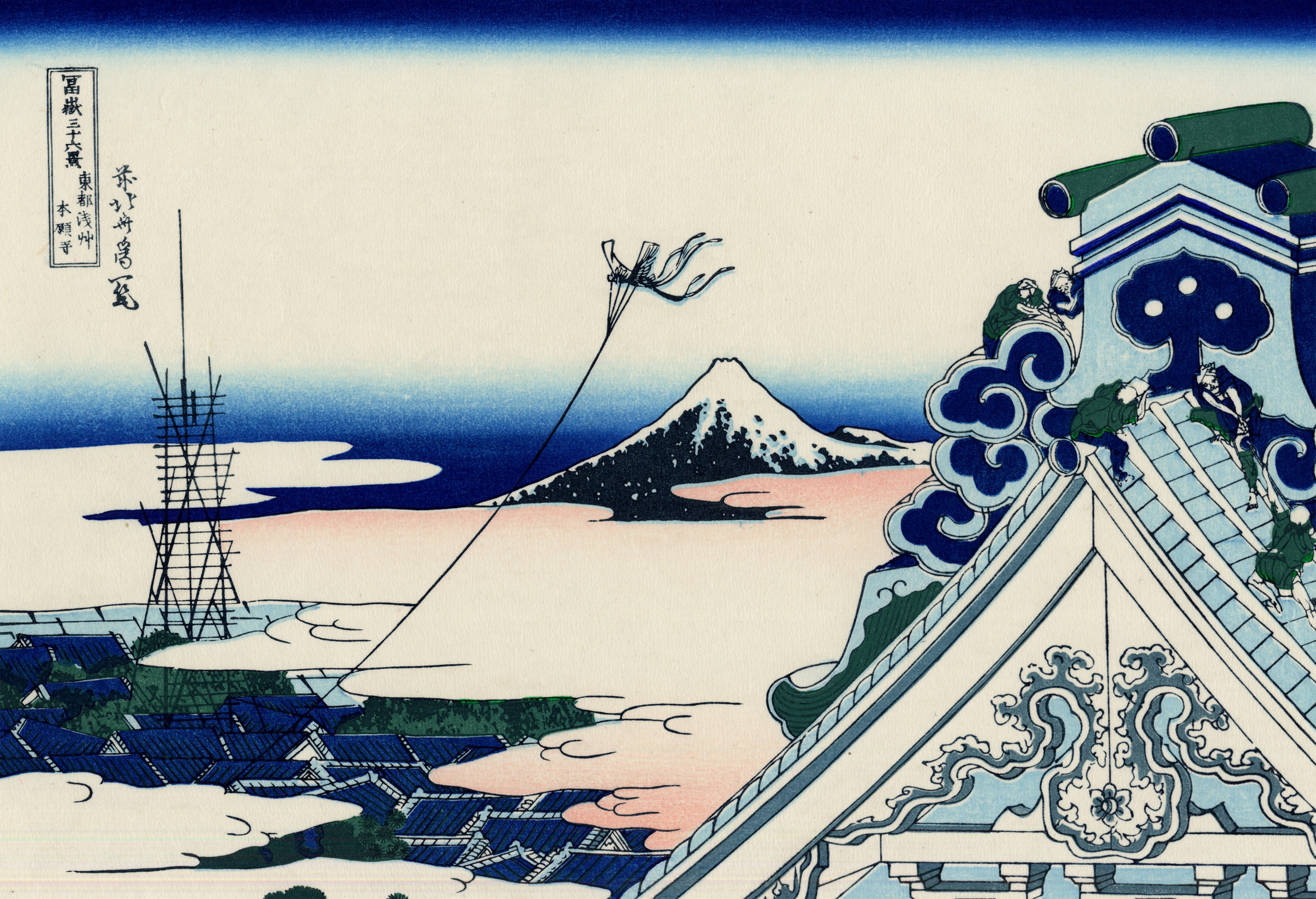
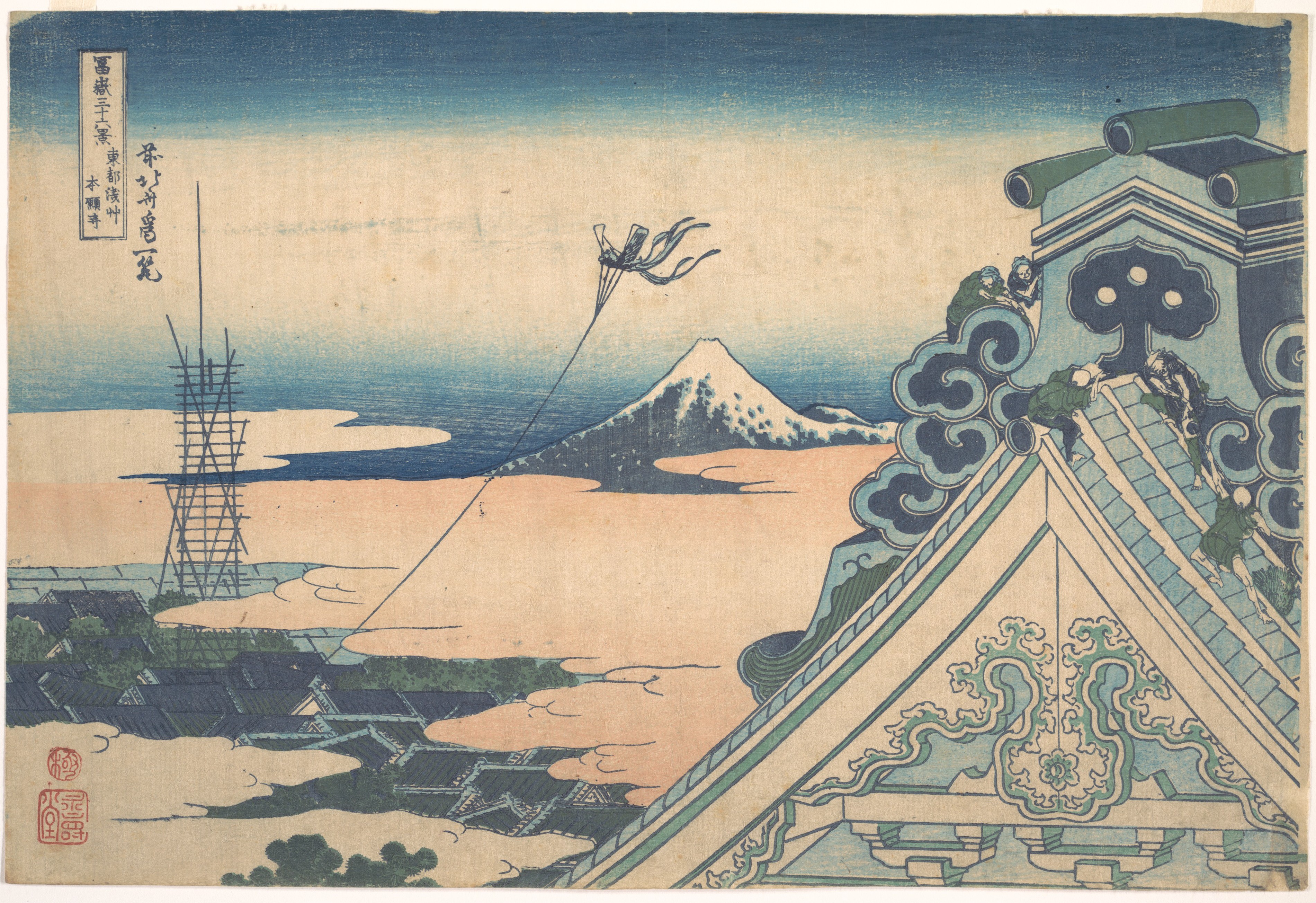
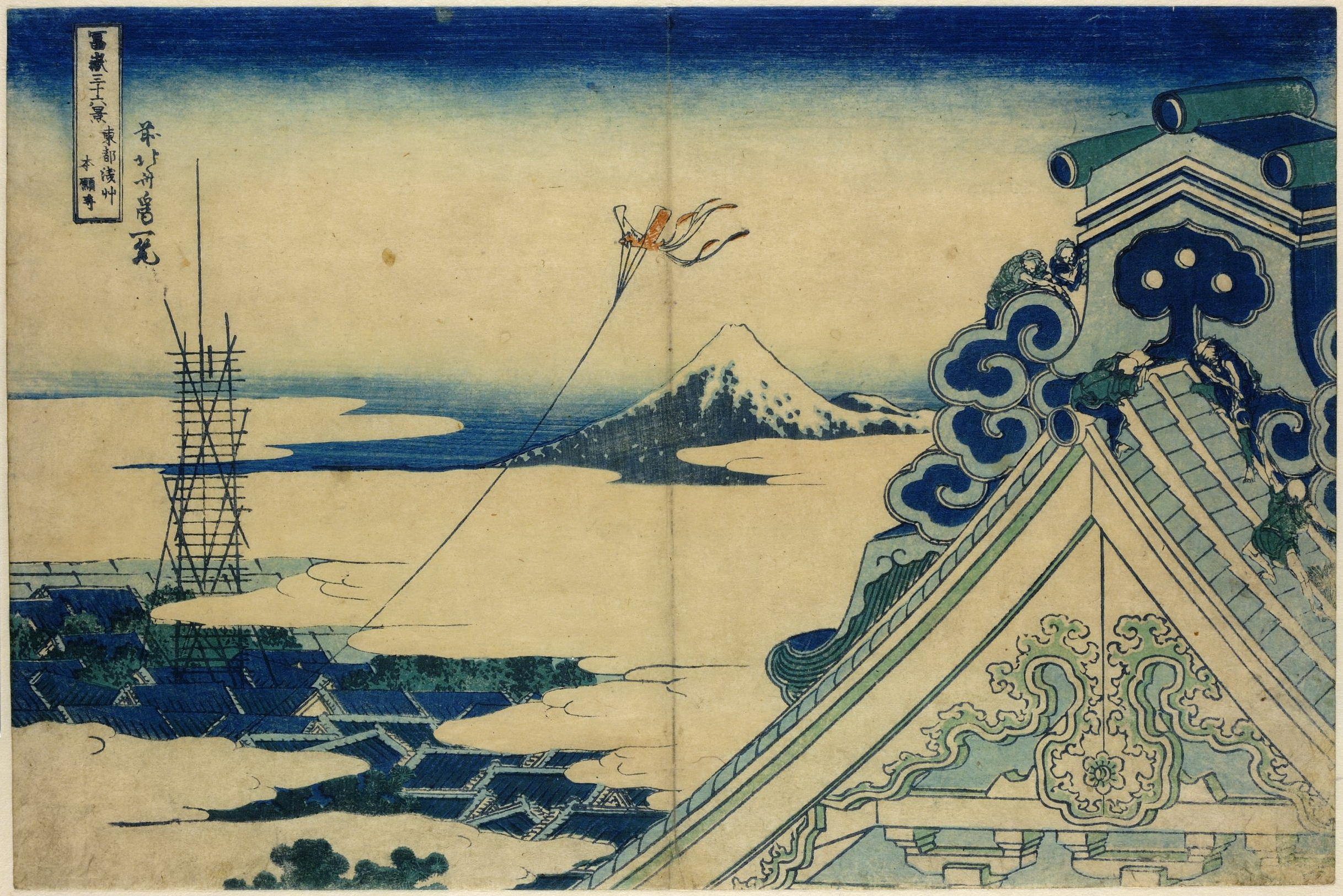
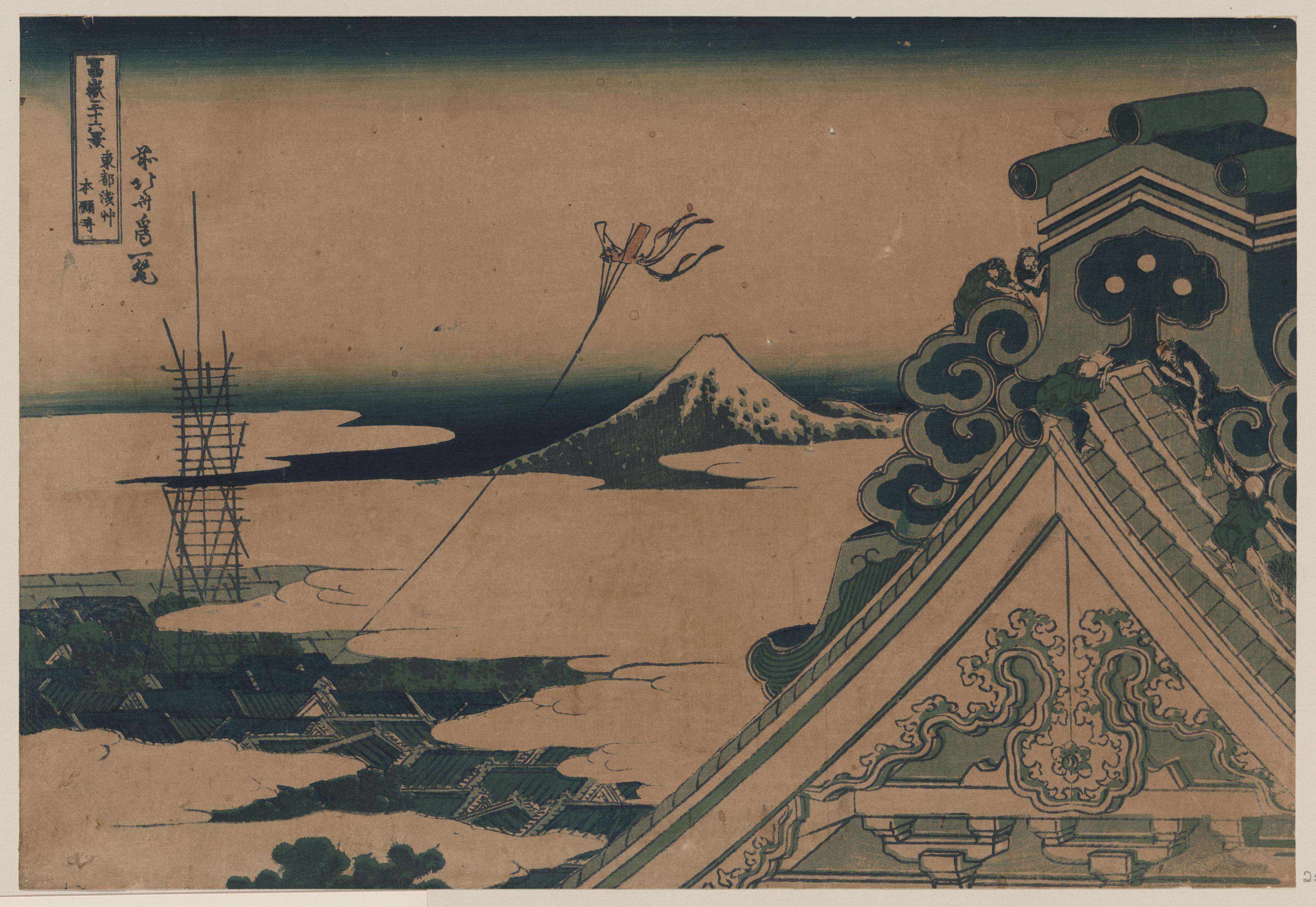
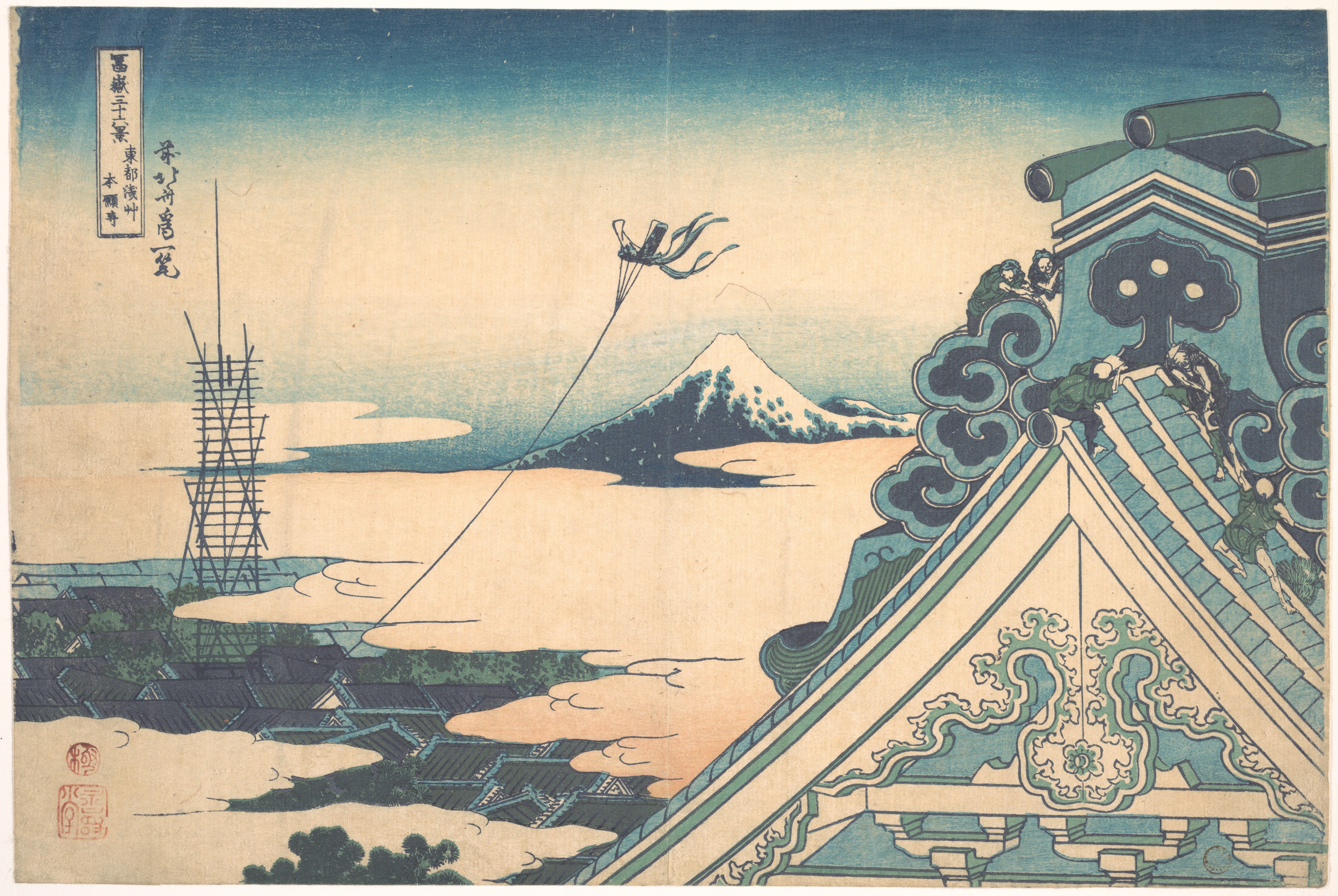
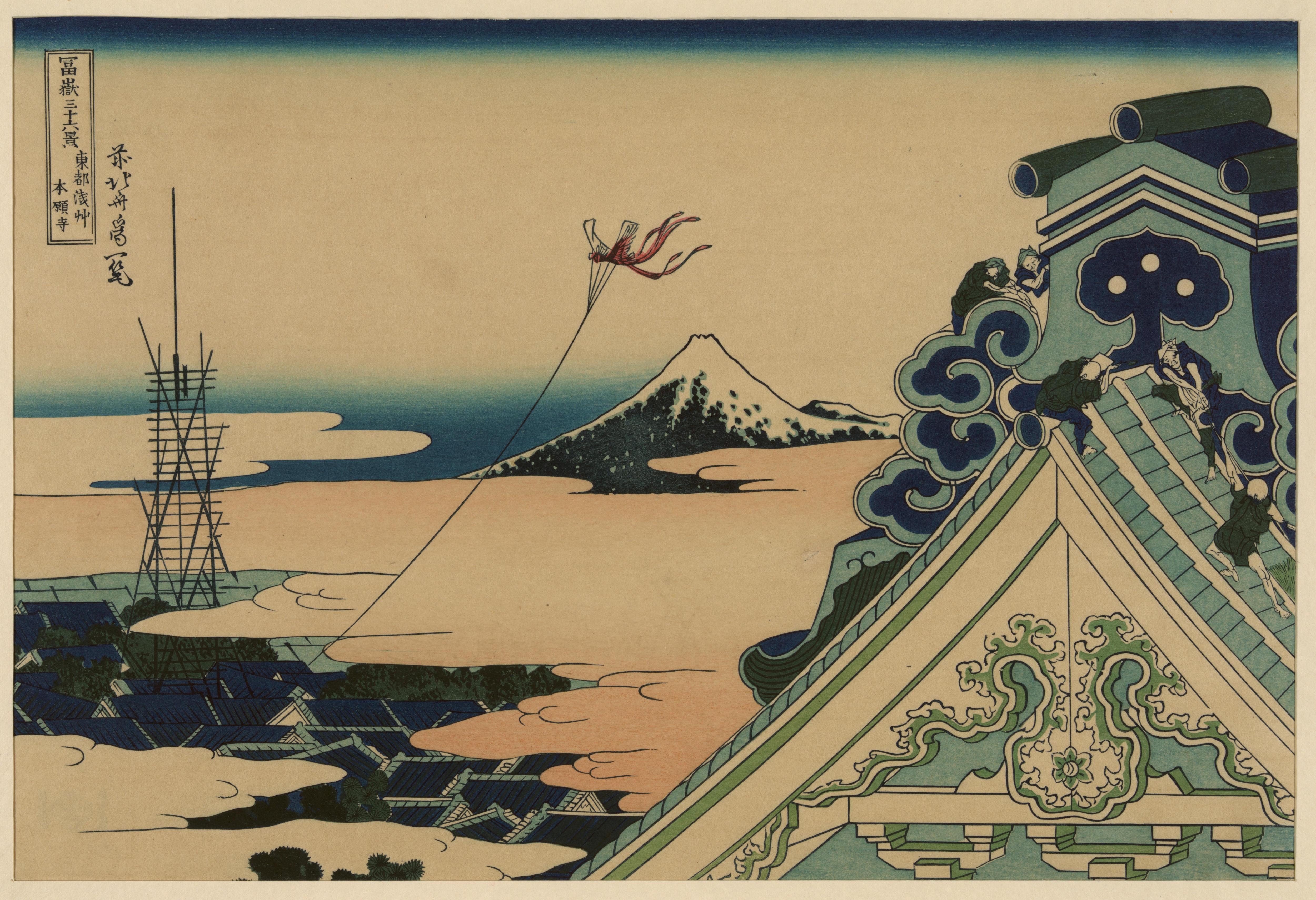
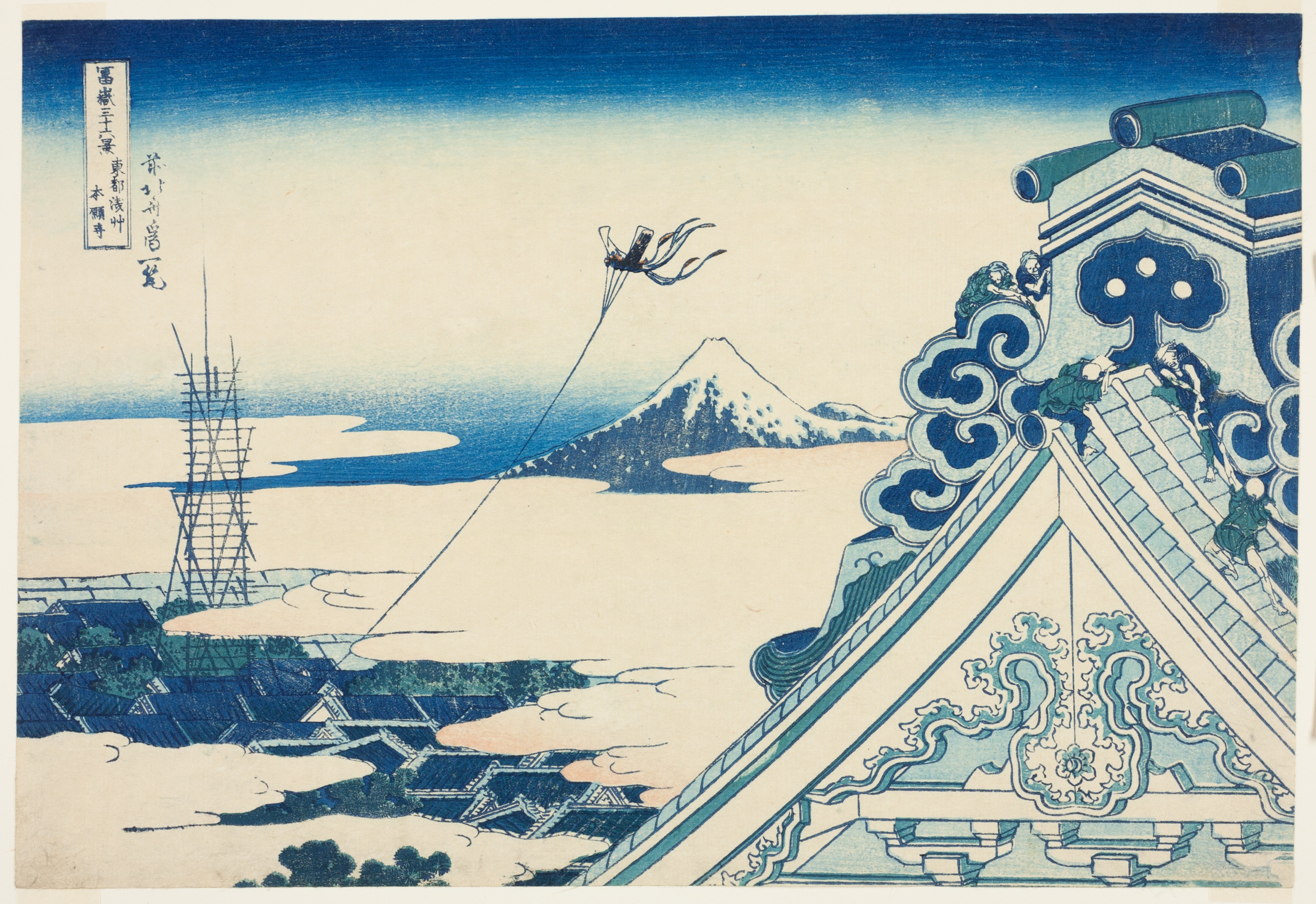
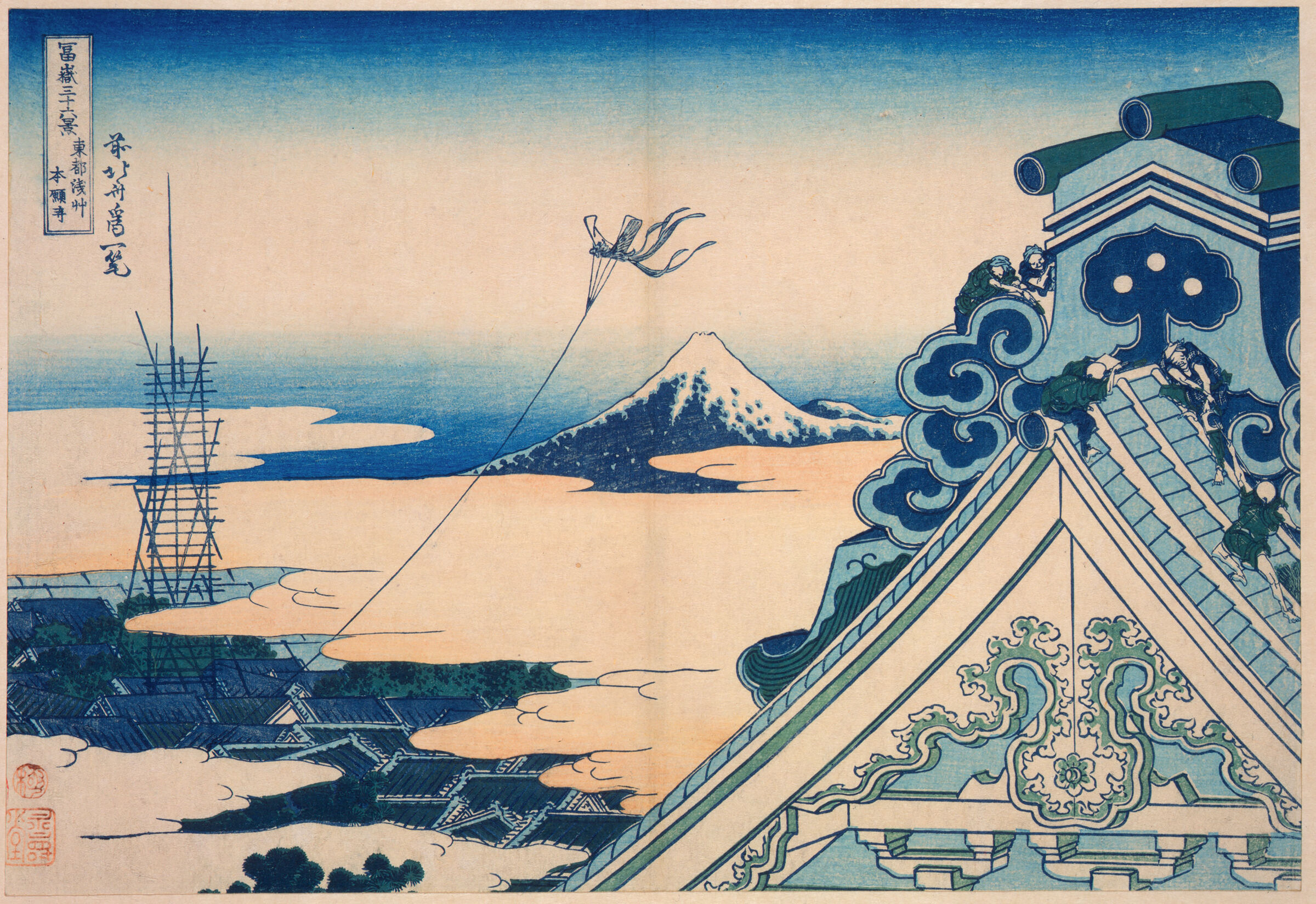
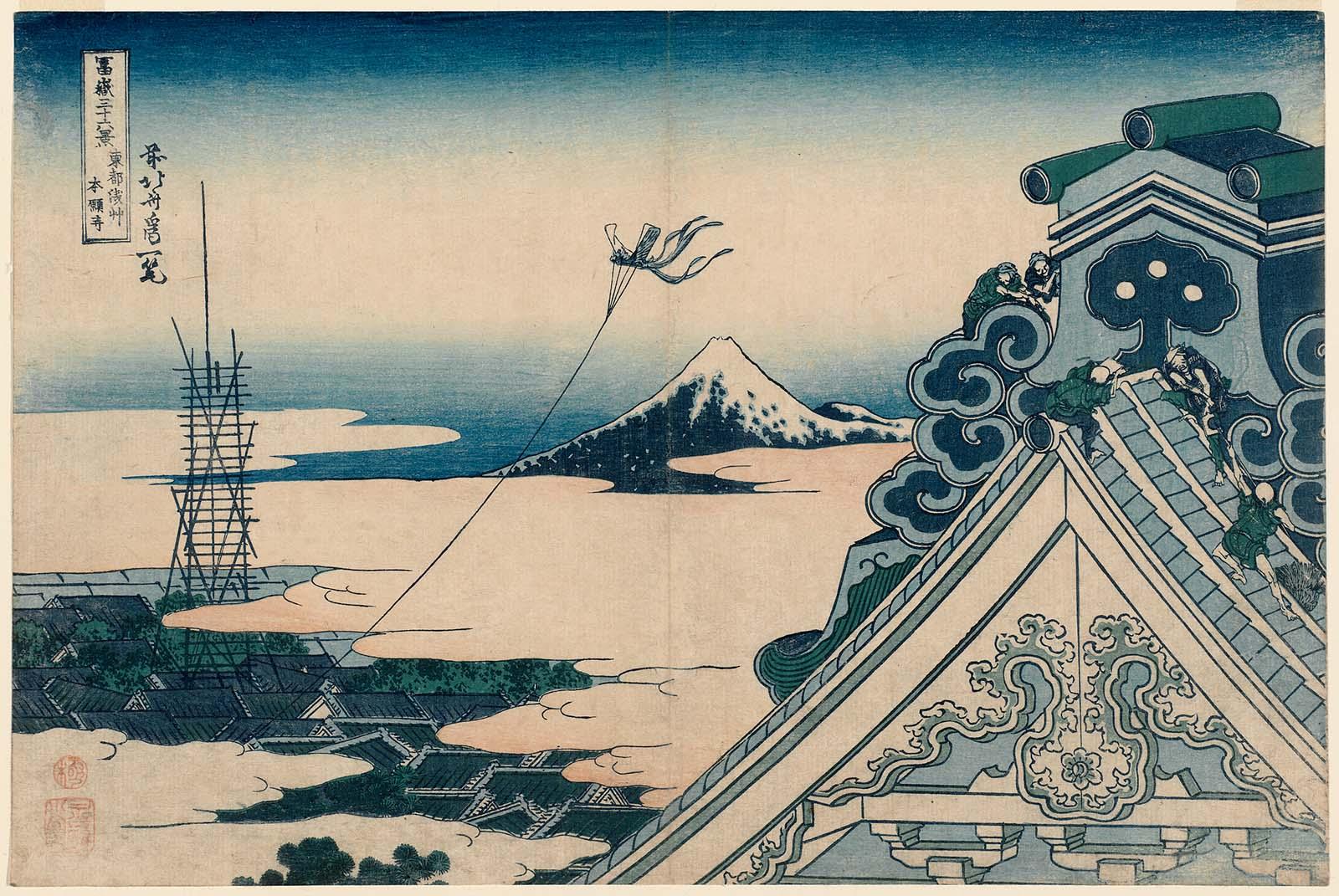
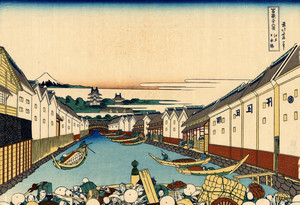
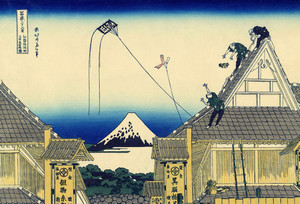
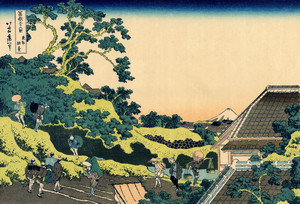
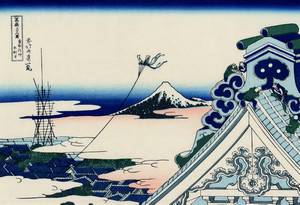
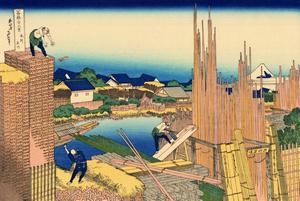
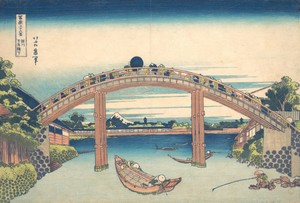
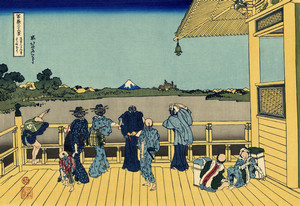
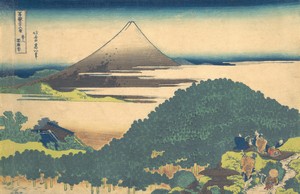
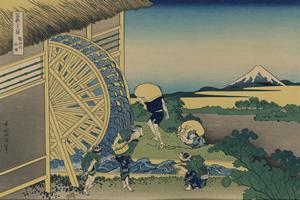
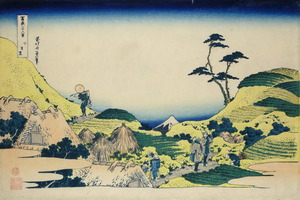
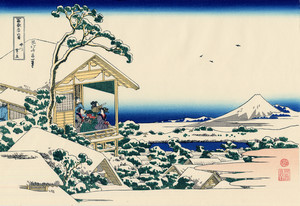
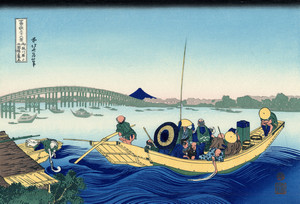
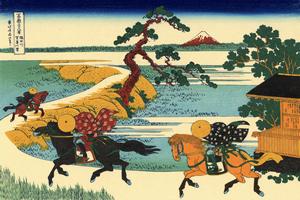
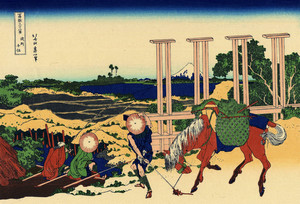
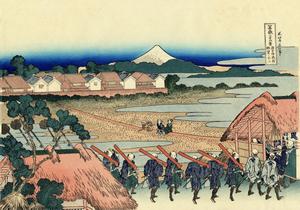
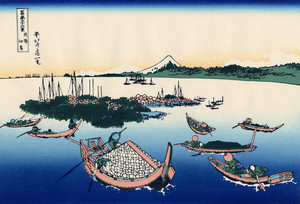
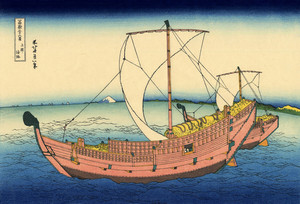
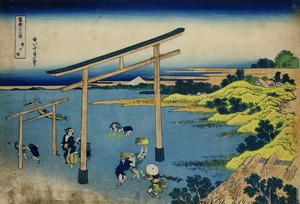
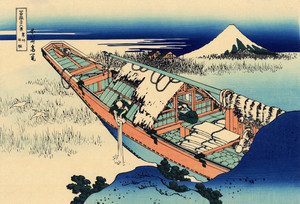
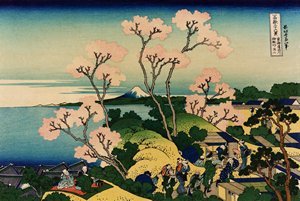
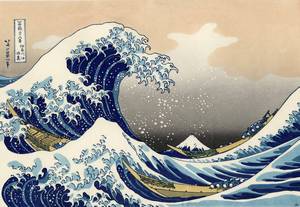
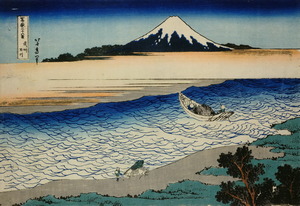
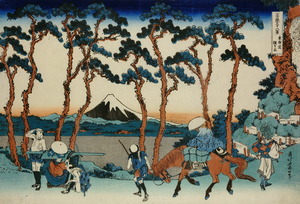
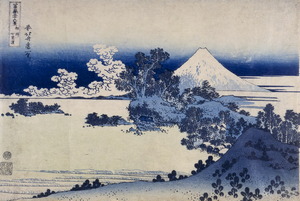
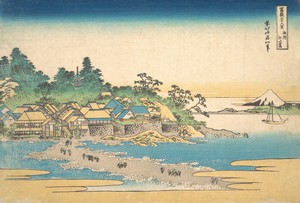
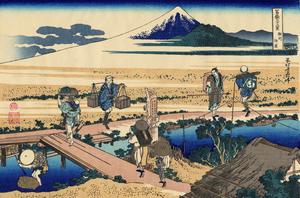
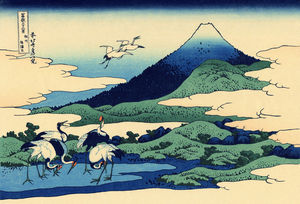
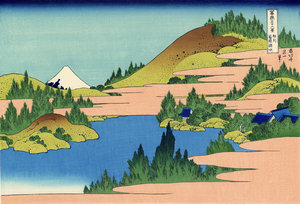
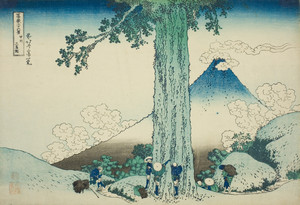
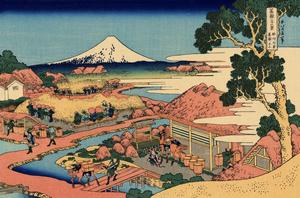
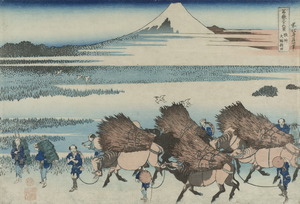
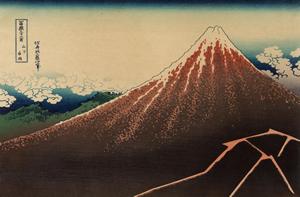
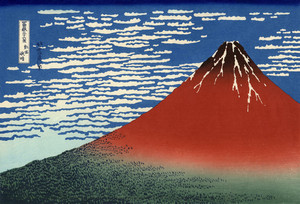
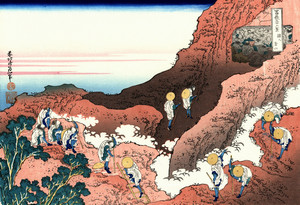
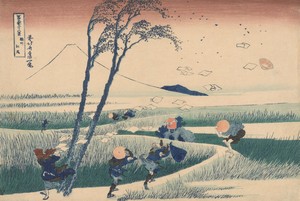
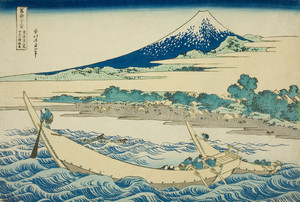
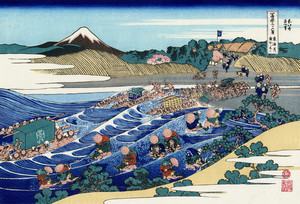
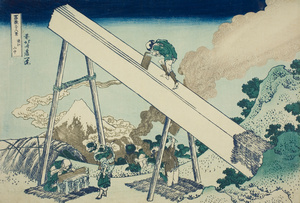
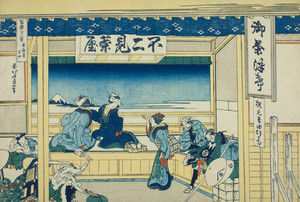
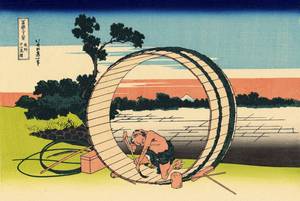
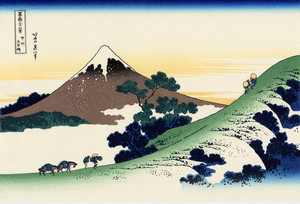
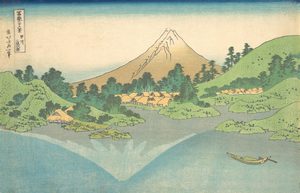
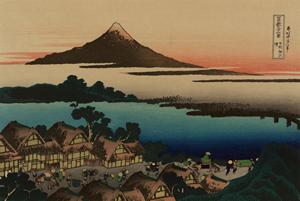
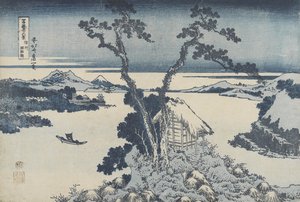
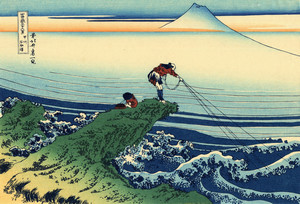
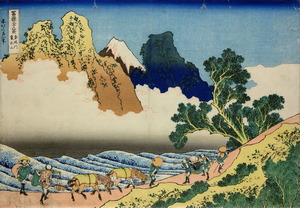





Комментарии
Добавить комментарий